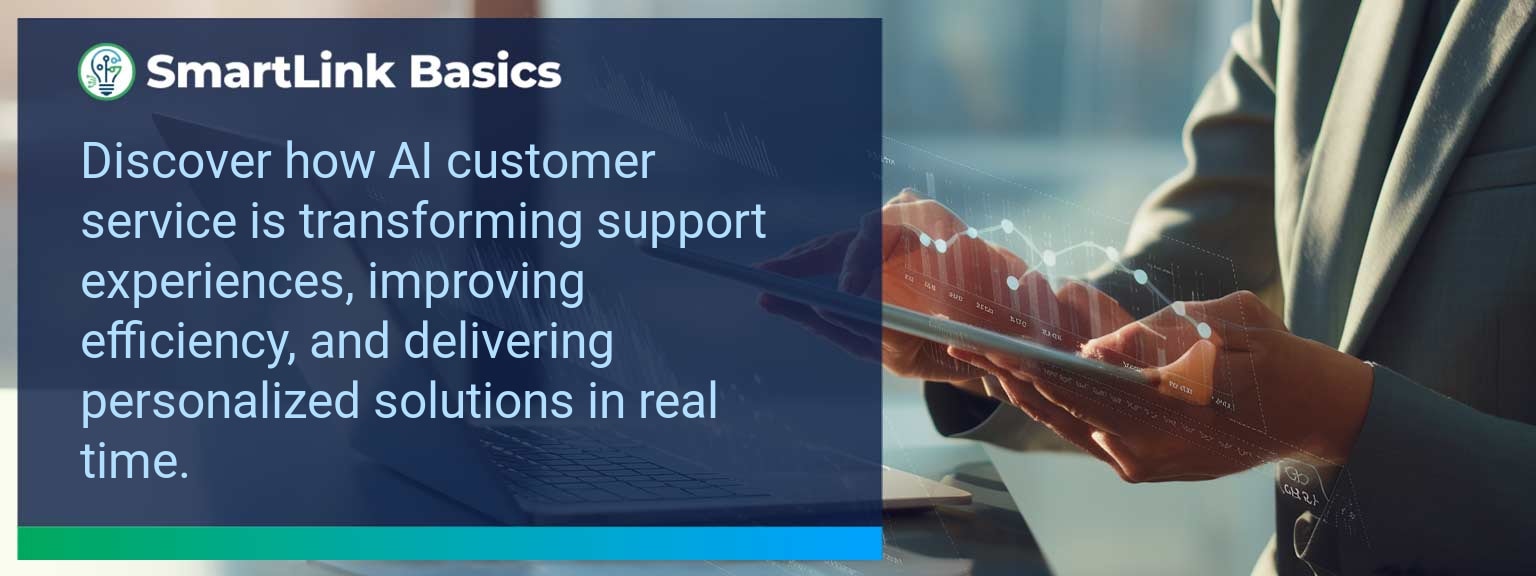Customer queries are now handled in seconds, not hours, with AI-powered systems. According to McKinsey, businesses implementing AI in customer operations can reduce response times by up to 80%, directly boosting customer loyalty and retention. For sales leaders, this is more than a support upgrade—it is a revenue advantage. At SmartLink Basics, we explore how AI customer service accelerates decision-making, reduces overhead, and enables data-driven personalization at scale.
This article breaks down the challenges of conventional support models, how artificial intelligence in customer support reshapes workflows, and the measurable impact on customer experience. You will gain actionable strategies to integrate AI chatbots for service, deploy machine learning customer service tools, and design automation that preserves the human touch.
- AI reduces response times and operational costs in customer support.
- Machine learning enables predictive service, preventing recurring issues.
- Natural language processing (NLP) improves accuracy in query handling.
- Virtual assistants streamline multi-channel communication 24/7.
- Data-driven insights enhance customer experience and sales alignment.
What Changed and Why AI Customer Service Matters Now
Customer expectations have shifted to demand instant, accurate, and personalized interactions. AI customer service meets this demand by integrating automated customer support tools and AI helpdesk solutions directly into sales and service ecosystems. The significance lies in reducing friction points that previously slowed deal cycles and degraded customer trust. For example, AI chatbots for service can resolve standard product questions instantly while escalating complex matters to human agents with complete case histories intact. Sales leaders should assess current response times, escalation frequency, and resolution quality. A structured AI integration plan will reveal both efficiency gains and new upsell opportunities.Redesign the Revenue Operating System with AI Customer Service
ICP, Segmentation, and Targeting AI algorithms refine customer profiles by analyzing historical support data, enabling precise segmentation for proactive outreach. This creates targeted offers that align with known service patterns. Pipeline Architecture AI-driven alert systems flag at-risk accounts based on support inquiries, helping sales teams intervene before renewal dates. Plays and Messaging Integrating service insights improves sales scripts by addressing common customer objections found in support logs. Operating Cadence Weekly dashboards combining sales and AI customer service metrics maintain alignment between support quality and revenue targets.Common Issues In Traditional Support Models
Legacy support models rely heavily on manual ticket management, resulting in delayed resolutions, inconsistent service quality, and high agent workload. These bottlenecks often lead to longer sales cycles and decreased customer confidence. For example, a SaaS vendor without automated routing can see support volumes spike after major releases, overwhelming available staff. Agents spend time triaging instead of resolving, leading to churn risk. Audit your current model to identify recurring low-value tasks suitable for automation. Start with repetitive FAQs and move toward predictive issue detection.Leveraging AI To Enhance Service Efficiency
Artificial intelligence in customer support automates inquiry classification, routes cases to the right specialist, and even drafts resolutions using NLP. This ensures quicker turnaround and frees agents to address high-complexity issues. An e-commerce brand deploying AI helpdesk solutions reduced resolution time from 12 hours to under 20 minutes for 70% of incoming tickets. Sales leaders should invest in AI platforms that integrate seamlessly with CRM systems, ensuring service data informs every future customer touchpoint.Positive Impacts On Customer Satisfaction
When AI customer service is deployed effectively, it improves first-contact resolution rates, personalizes communications, and keeps customers engaged through proactive updates. A financial services provider using virtual assistants saw a 35% NPS lift within six months due to faster, context-aware responses. To sustain gains, monitor both quantitative and qualitative feedback, ensuring automation enhances rather than erodes the human connection in customer relationships.Metrics That Matter
| Category | Metric | Definition | Target |
|---|---|---|---|
| Leading | First Response Time | Average time to initial customer reply | Under 5 minutes |
| Lagging | Customer Satisfaction Score | Post-interaction survey rating | ≥90% |
| Quality | First Contact Resolution Rate | % of issues resolved in the first interaction | ≥85% |
Get the 90-day plan, coaching rubric, and dashboard template to operationalize AI in your enablement program.









